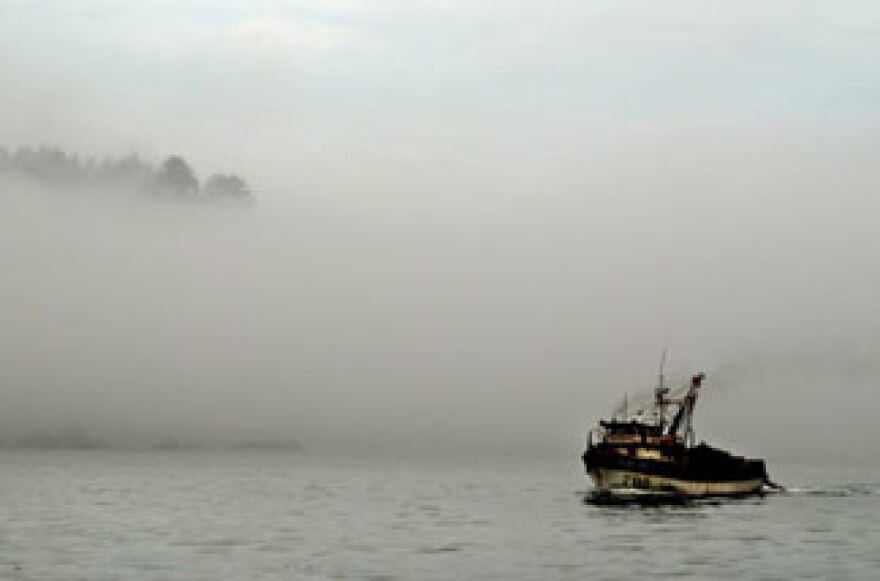Truth matters. Community matters. Your support makes both possible. LAist is one of the few places where news remains independent and free from political and corporate influence. Stand up for truth and for LAist. Make your year-end tax-deductible gift now.
This archival content was originally written for and published on KPCC.org. Keep in mind that links and images may no longer work — and references may be outdated.
Salmon 'life cycle assessment' finds fish with varied global warming impact

“Going local” has been a mantra for people who want to make environmentally responsible choices about what they eat. But where food’s from might matter the most when calculating its carbon footprint.
Researchers from Sweden, Canada, and the U.S. have looked at a new way to measure the climate impact of one food. They ended up with some surprising results.
The food the research team chose is salmon. Astrid Scholz of Oregon-based Ecotrust is an ecological economist. She says they studied salmon for three years because it’s eaten worldwide. "It’s what I think of as the hamburger of seafood," she says. "You can be anywhere in the world just about and get salmon. It’s ubiquitous."
The researchers didn’t just measure “food miles” – the distance salmon travels from port to your plate. They followed the fish’s whole life in the food system. And to make sure their assessment was complete, they even counted how much “greenhouse gas” gets produced as salmon comes to market. "It’s essentially an environmental accounting framework that helps you track all the inputs and outputs for a commodity, whether it’s a foodstuff or your car or a pencil, literally from cradle to grave," she says.
So for salmon caught in ocean, an accounting of how its production contributes to global warming has to include the greenhouse gases from the fuel used by the boat when fishermen chase their catch at sea. "You’re burning a lot of diesel to catch a fish," says Scholtz. "So if you have terminal fisheries – wait for the fish to come back to you – then that’s a relatively lower energy intense way to catch them."
Farmed salmon has hidden environmental costs of its own. Fish farms in Scotland, Chile, and Norway can have vastly different carbon footprints. A big reason for that, says Astrid Scholz, is how the food for the fish is made and shipped to the salmon farm. "It was amazing to me as a non-biologist how many ingredients go into feed pellets," she says. "Everything from poultry meal and bone meal, to grains and cereals, to fish oil and fish meal."
But because farmed salmon has hidden environmental costs doesn’t mean salmon fresh from the dock is better. It can be better for the environment – but not if the dock is in Chile and the fish is flown to California. "The burden of any fish put on planes is enormous," she points out. "Right there, your environmental benefits are blown out of the water. Fish shouldn’t fly."
Instead, Scholz says fish can be frozen at sea and shipped as cargo with a tiny cost in terms of global warming. She says that makes Alaska salmon a good low-impact choice everywhere in the world. "You cannot out-compete that system," she adds. "It is so efficient. Even after putting it on a boat for 15,000 miles, it still does better than organically-farmed salmon from Scotland."
Ecological economist Astrid Scholz says the research shows consumers’ choices matter, even down to whether you ride your bike or drive your car to the grocery store. And she says people are less likely to waste fish if they share it. "One of the quirkier insights is it helps if you eat out more and eat with friends, especially," she laughs.
Full comparisons of which food production and delivery methods are efficient and ecological will come out in technical papers and on a Web site next year.







